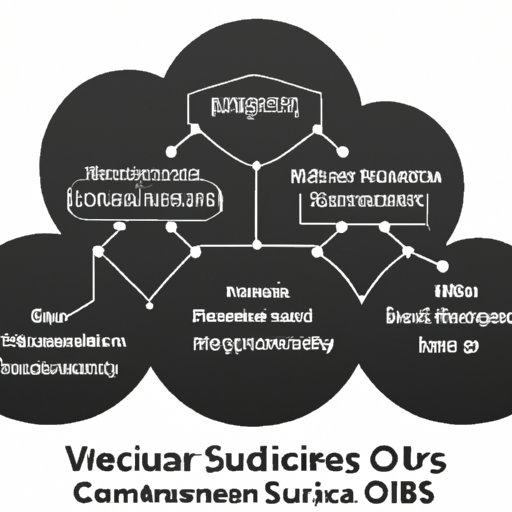Introduction
Service Oriented Architecture (SOA) is a technology that enables organizations to achieve greater agility and flexibility in their IT systems by breaking down large, complex applications into smaller, more manageable services. The goal of SOA is to increase efficiency, reduce costs and improve the ability to respond quickly to changing business needs.
Explaining the Basics of Service Oriented Architecture
At its core, Service Oriented Architecture is a software design approach that supports the integration of different applications and services within an organization. It provides a framework for developing, deploying and managing distributed applications that can be used to build complex business solutions. The main benefits of SOA are increased efficiency, improved flexibility and reduced costs.
Examining the Benefits of Service Oriented Architecture
The primary benefit of SOA is increased efficiency. By breaking down large, complex applications into smaller, more manageable services, organizations can reduce the time and effort required to maintain their IT systems. This can result in significant cost savings and improved operational performance. Additionally, SOA allows organizations to quickly and easily integrate new technologies and services into their existing infrastructure.
Another major benefit of SOA is improved flexibility. By decomposing applications into smaller services, organizations can make changes to individual services without having to modify the entire application. This allows organizations to quickly adapt to changing market conditions and customer needs. Furthermore, it enables organizations to easily scale their applications as their business grows.
Finally, SOA can help organizations reduce costs. By breaking down applications into smaller services, organizations can reuse existing code and leverage existing systems to create new applications. This reduces the need for expensive custom development, resulting in significant cost savings.

Outlining the Components of Service Oriented Architecture
Service Oriented Architecture consists of four main components: services, connectivity, messaging and security. Services are the basic building blocks of SOA and refer to the individual functions or tasks that make up an application. Connectivity refers to the communication between these services and other components of the system. Messaging is the process of exchanging data between services, while security ensures that only authorized users can access the system.
Understanding the Challenges of Service Oriented Architecture
Despite its many benefits, there are several challenges associated with Service Oriented Architecture. One of the main challenges is complexity. As the number of services increases, so does the complexity of the system. This can lead to increased maintenance costs and difficulty in troubleshooting problems.
Another challenge is the lack of standards. Different vendors may use different protocols and formats, making it difficult to integrate different services from different vendors. Finally, poor governance can lead to conflicts between different services and hinder the overall effectiveness of the system.

Exploring Recent Developments in Service Oriented Architecture
In recent years, several new technologies have emerged that are closely related to Service Oriented Architecture. These include microservices, containers and cloud computing. Microservices are small, independent services that can be used to build complex applications. Containers provide a way to package and deploy applications across multiple environments. And cloud computing offers a way to store and access data on remote servers.

Comparing Different Types of Service Oriented Architecture
There are two main types of Service Oriented Architecture: Simple Object Access Protocol (SOAP) and Representational State Transfer (REST). SOAP is a protocol that defines how messages should be formatted and transmitted between services. REST is an architectural style that defines how web services should be designed and implemented.
In addition, there are two distinct approaches to SOA: monolithic and microservices. Monolithic applications are built as a single unit, whereas microservices are built as a collection of small, independent services. Each approach has its own advantages and disadvantages.

Analyzing the Future of Service Oriented Architecture
The future of Service Oriented Architecture looks promising. Automation and machine learning are likely to be increasingly used to manage and optimize the performance of services. Additionally, SOA will become increasingly important for integrating Internet of Things (IoT) devices into existing systems. Finally, security and privacy will remain a top priority as organizations strive to ensure the safety of their data.
Conclusion
Service Oriented Architecture is a powerful technology that can help organizations increase efficiency, improve flexibility and reduce costs. It consists of four main components: services, connectivity, messaging and security. There are several challenges associated with SOA, including complexity, lack of standards and poor governance. Additionally, several recent developments, such as microservices, containers and cloud computing, have further enhanced the capabilities of SOA. As automation and machine learning become increasingly important, SOA will continue to be an essential technology for modern organizations.
(Note: Is this article not meeting your expectations? Do you have knowledge or insights to share? Unlock new opportunities and expand your reach by joining our authors team. Click Registration to join us and share your expertise with our readers.)
